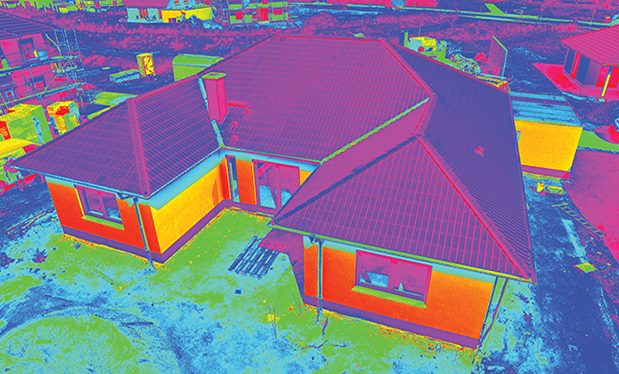In December 2019, the Department of Labor’s Bureau of Labor Statistics published the Census of Fatal Occupational Injuries for calendar year 2018. The census is an actual counting and compilation by BLS of the number of deaths suffered by workers as the result of a work-related incident or exposure.
The fatality statistics are published in several charts, for example, by industry, source of injury, occupation of worker and worker age. But the statistics are void of specific details relative to any particular case. There is no data provided for the weather, building type, tasks being performed, materials and equipment in use, or training and experience of the deceased worker; nevertheless, the census provides a valuable overview of fatalities in every industry.
BLS data may help safety and risk management professionals revise or supplement training resources, develop new approaches for categorical hazard identification and/or point to areas where more research is needed to direct targeted hazard control efforts. It is important to understand the statistics that relate to the roofing industry and call attention to the critical information about industry fatalities that should be collected and published by government agencies to help the industry reduce the number of worker deaths.
Roofing in 2018
BLS reports there were 106 workplace fatalities involving workers employed by roofing companies in 2018, down from 107 in 2017. A more significant piece of good news is roofing fatalities from falls decreased from 88 in 2017 to 77 in 2018. Such an unprecedented drop in fatalities (about 12%) ordinarily would be viewed as a substantial success regardless of the causation fundamentals. However, the good news is tempered by the fact that deaths from exposures in roofing increased from 10 in 2017 to 19 in 2018, a 90% increase.
The fatalities reported by BLS in the falls and exposures categories reflect workers employed by a roofing company regardless of their job titles or duties. Exposures, under the BLS category, are described as “exposures to harmful substances or environments.” The exposure category does not include fires or explosions, factors that were not present in any roofing industry deaths in 2018.
BLS data also is presented in charts based on a select number of occupations. This gives some insight into the workers who died but reveals gaps in the data.
A “roofer” according to the BLS Standard Occupation Classification “covers roofs of structures with shingles, slate, asphalt, aluminum, wood, or related materials. May spray roofs, sidings, and walls with material to bind, seal, insulate, or soundproof sections of structures.”
BLS reports 74 workers whose occupation was characterized as roofer died as a result of a fall and 16 died from exposures. Additional BLS charts indicate 74 of the 77 workers who died in the roofing industry from falls and 16 of the 19 who died from exposures in 2018 were roofers. We have no definitive information about the other job titles or duties of the three fall victims or the three exposure victims and can only speculate based on additional data in BLS charts.
It is possible the other workers were supervisors, which could include superintendents, foremen or crew leaders, who as a broader construction group category suffered 39 fall fatalities and 19 exposure fatalities in 2018. But this cannot be stated definitively because the supervisor category is not refined into subgroups such as roofing supervisors; it is merely set out as a broader group under the construction occupations.
An occupational category of “helper” is listed under the construction category and has a narrower subgroup of “roofer helper” under it. Three fatalities are reported for the roofer helper subgroup for 2018, but those fatalities are not further specified under the following six event or exposure categories set out by BLS:
- Violence and other injuries by persons or animals
- Transportation incidents
- Fires and explosions
- Falls, slips and trips
- Exposures to harmful substances or environments
- Contact with objects and equipment
Statistics are not specific enough to determine whether the uncategorized fatalities might involve sales or estimating personnel. The confusion created by this lack of specificity is frustrating because it leaves no ability to state who besides people in the roofer classification are dying in the roofing industry.
State statistics
Fatality data from states does not always provide the identical category information as reported by BLS. But a look at some comparable state data can be enlightening. California and Texas are good states to compare because they have an approximately equivalent construction workforce size; substantial geographical area; and operate under different occupational safety and health rules (California has an Occupational Safety and Health Administration-approved State Plan, and Texas is under federal OSHA jurisdiction).
In 2018, California had 71 construction industry fatalities, and 32 were caused by falls. Texas had 107 construction fatalities, and 30 were caused by falls. California reported seven roofing industry fatalities—five fatalities were reported under the occupation of roofer, and four of those five were the result of a fall to a lower level. Texas reported 12 roofing industry fatalities; all 12 were reported under the occupation of roofer, and nine of those 12 were the result of a fall to a lower level.
The significant difference in fatality numbers in Texas versus California points to the need for comprehensive research to determine causes of the disparity. Focused research could provide an analytics-based response to reduce or eliminate causal factors responsible for the fatalities and possibly explain why California appears to be a safer state to work in than Texas.
OSHA’s role
In 2015, OSHA published in an instruction format the Field Operations Manual, described as “a reference document for field personnel, providing enforcement policies and procedures in conducting OSHA investigations.”
In the manual, OSHA states: “All fatalities and catastrophes will be thoroughly investigated in an attempt to determine the cause of the event, whether a violation of OSHA safety and health standards, regulations, or the general duty clause occurred, and any effect the violation had on the incident.”
The fatality investigation procedure laid out in the Field Operations Manual requires the initial completion of OSHA Form 36, Fatality/Catastrophe Form, by the OSHA area office where the death occurred. The form must be submitted to the national office. The form’s purpose, according to OSHA, is to collect preliminary data to assess whether a comprehensive investigation should be performed and use the data for OSHA research purposes. The dual purpose raises a couple questions:
- Aren’t all fatalities supposed to be investigated in a comprehensive manner so proper analysis can be made of causation and possible solutions?
- Is the agency performing investigations in all cases?
Whether every OSHA Form 36 submission triggers a comprehensive investigation is unknown; however, when a comprehensive investigation is intended to be completed, it is documented on OSHA Investigation Form 170 and entered into the OSHA Information System, according to the Field Operations Manual. The manual sets out seven categories of information, with specific descriptions of each, that must be documented in the investigation, such as the decedent’s training and experience; photos, sketches, drawings and measurements of the work site where the accident took place; tasks being performed; equipment being used; witness statements; and employer records requested.
On OSHA’s website, you can search Fatality and Catastrophe Investigation Summaries from OSHA Form 170. OSHA states the “summaries provide a complete description of the incident, generally including events leading to the incident and causal factors.” However, the search function is difficult to master and often provides incomplete fatality data and summaries, which contradicts the requirement to “thoroughly investigate” all fatalities. The information is not useful to assess causation for purposes of hazard reduction or controls by those using the database.
For example, BLS reports the roofing industry suffered 106 fatalities in 2018. Searching the OSHA database for fatalities in 2018 under the roofing industry code returns investigative summaries on 71 of those 106 fatalities, leaving 35 investigative summaries apparently unaccounted for. If the search is narrowed to find only those fatalities that resulted from falls, 38 results are returned. BLS reported 77 deaths from falls in roofing in 2018, leaving 39 unaccounted for. It is unknown whether those unaccounted fatalities were investigated or misclassified, leaving a discrepancy in the roofing industry data.
Additionally, not all summaries provide the complete description one might expect from an investigative report. Following is an example of a summary from one of the 38 fall investigations: “ ... on January 18, 2018, an employee fell from a roof/ladder while repairing a roof and was killed.” Most summaries may include information about whether fall protection was in place, the type of roof and the distance the worker fell, but generally that would be the most detail reported.
One possible explanation for missing information is some investigations may be ongoing from 2018. In addition, OSHA notes the database was designed primarily as an inhouse system to be used by the agency for purposes of directing its resources, which may affect comprehensive data publication.
What is needed
Regardless of the intent of OSHA’s database and its usefulness, OSHA conducts investigative reports about workplace fatalities and has specific instructions for what those reports are to include. That information, if collected and reported comprehensively, could be of tremendous help not only to OSHA but also every industry that employs workers subject to hazards that may cause injury or death.
What is needed is full access to comprehensive reports that are performed by professional investigators who document specifics related to each fatality. From what is available on the OSHA website, this currently is not being done.
If such information were available, researchers trained in occupational safety and health could then analyze the information and develop strategies to implement necessary plans and procedures to eliminate or reduce the hazards.
With the assistance of industry partners and affiliate organizations, NRCA intends in the coming months to press OSHA to properly complete investigative reports from all fatalities in roofing and initiate a research process into roofing industry falls.
Harry Dietz is an NRCA director of enterprise risk management.



